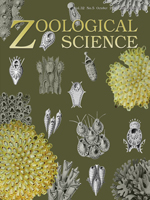In Anolis lizards, sexual dimorphism has been reported in morphological and ecological traits. Males show larger body size and longer limbs related to territorial combat and courtship display with the dewlap. Although functional-anatomical traits are closely related to locomotor behaviors, differences between sexes in musculoskeletal traits on limbs remain unclear. We explored the relationships among sexual dimorphisms in musculoskeletal morphology, habitat, and locomotor traits in Anolis lizards. Specifically, we examined appendicular musculoskeletal morphology in three species of Cuban Anolis by measuring muscle mass and lengths of moment arms. Through comparisons of crossing locomotion, we found that the runner species possessed larger extensors in hindlimbs, which are advantageous for running, whereas the masses of the humeral and femoral retractors were larger in climber species, allowing these lizards to hold up their bodies and occupy tree substrates. Comparisons between the sexes showed different trends among the three species. Males of A. porcatus, which inhabit narrow branches or leaves, had stronger elbow extensors that maintain the display posture. In contrast, males of A. sagrei, which occupy broad surfaces, did not show sexual differences that affected social display. Moreover, A. bartschi indicated sexual differences despite the absence of dewlapping behavior. Our findings suggest that both sexes show fundamentally similar relationships between muscular morphology and locomotor habits to adapt arboreal or terrestrial substrates, and yet sexual dimorphism in forelimb muscles may additionally affected by male specific display with the dewlap.
How to translate text using browser tools
1 October 2015
Sexual Dimorphisms of Appendicular Musculoskeletal Morphology Related to Social Display in Cuban Anolis Lizards
Wataru Anzai,
Antonio Cádiz,
Hideki Endo

Zoological Science
Vol. 32 • No. 5
October 2015
Vol. 32 • No. 5
October 2015
Adaptation
Anolis
musculature
sexual dimorphisms
social behavior




